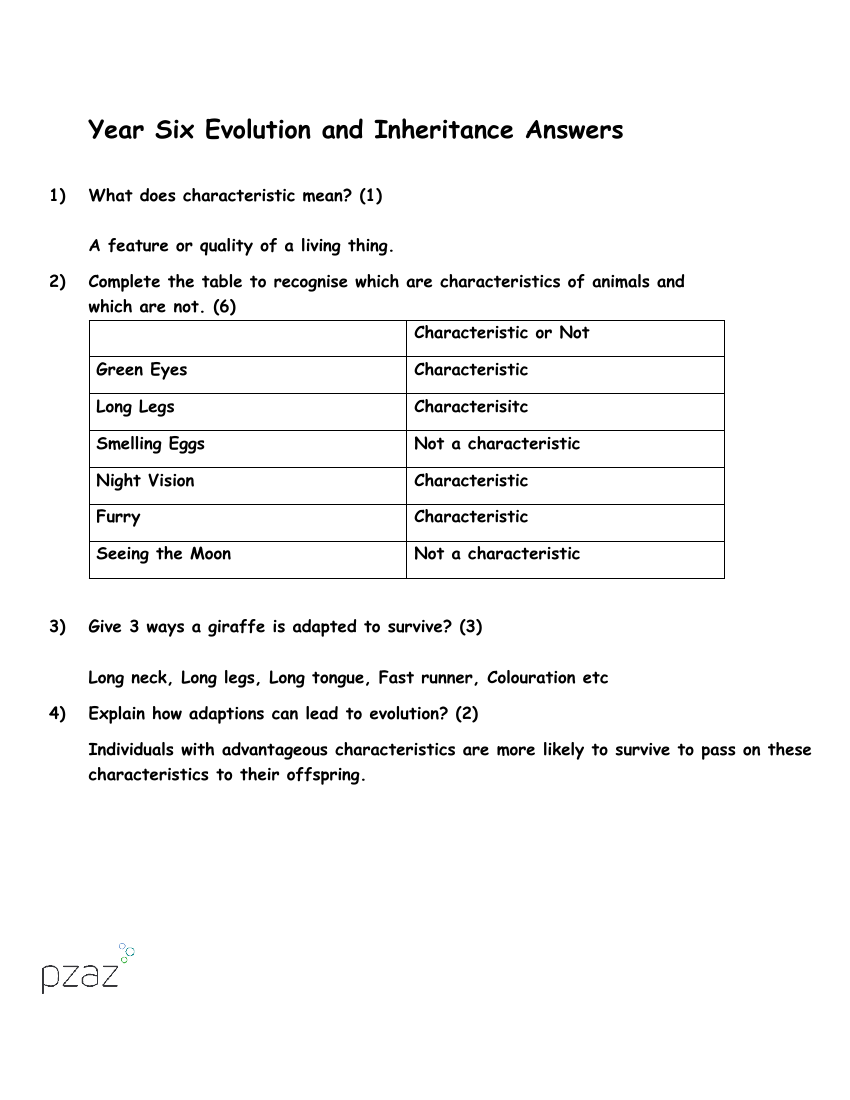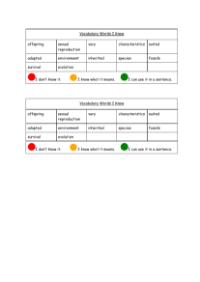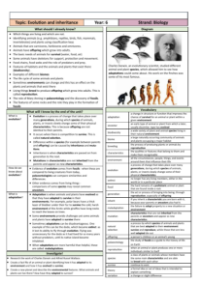Evolution and Inheritance - Answers

Science Resource Description
The 'Evolution and Inheritance' answer sheet for Year Six provides key responses to questions about biological traits and the principles of evolution. For instance, it clarifies that a 'characteristic' is a feature or quality of a living thing, such as green eyes or long legs, which are characteristics, whereas smelling eggs or seeing the moon are not. It outlines three adaptations that help a giraffe survive, including its long neck, legs, and tongue, among other possible adaptations like speed and colouration. The sheet further explains how these adaptations can lead to evolution, noting that individuals with beneficial traits are more likely to survive and pass these traits to their offspring.
The answers also distinguish between inherited characteristics, such as yellow eyes and brown hair, and acquired traits like scars or cuts, which are not inherited. It is stated that parents each contribute 50% of their DNA to their offspring, leading to a unique combination of traits and explaining why siblings are not identical. Evolution is defined as a gradual change in characteristics within a species. The process of sexual reproduction is identified as the means by which animals produce offspring, with DNA being the chemical responsible for transmitting characteristics. Lastly, the answer sheet includes a series of true or false statements to assess understanding of evolution, covering concepts such as the likelihood of tall parents having tall offspring, the definition of genetics, the timescale of evolutionary changes, and the meaning of 'survival of the fittest'.







